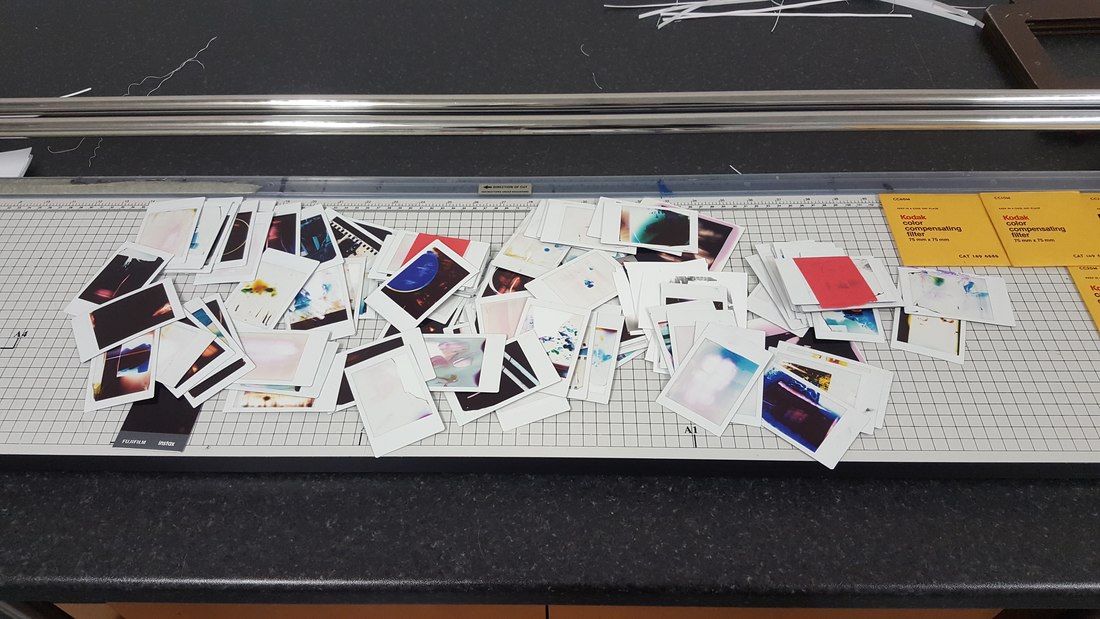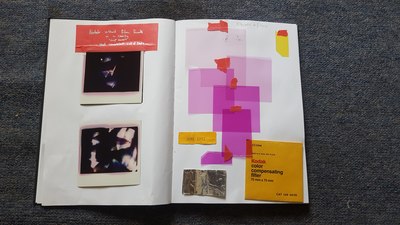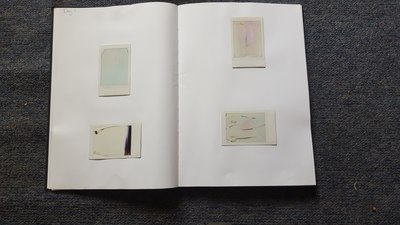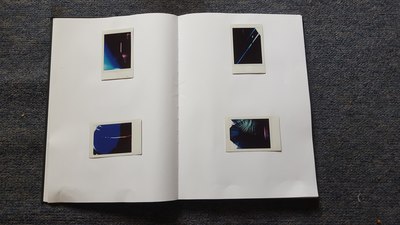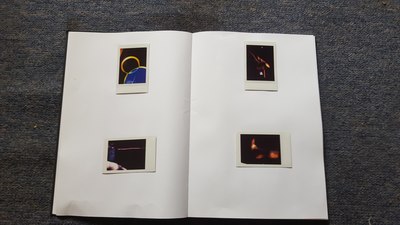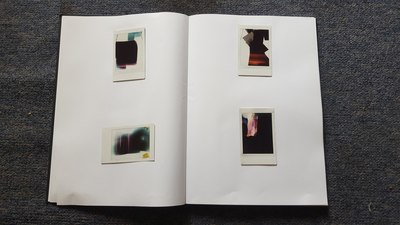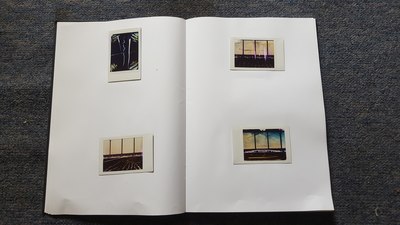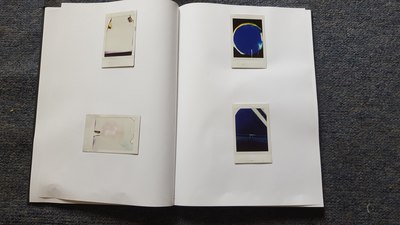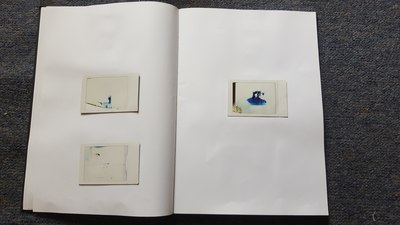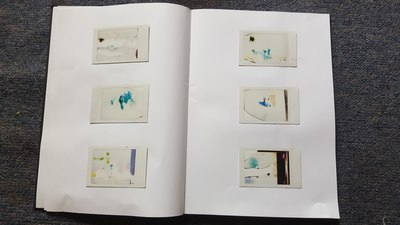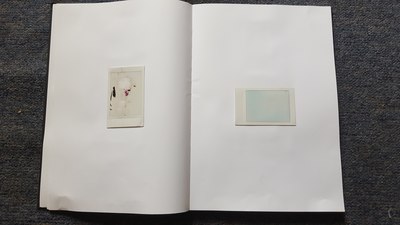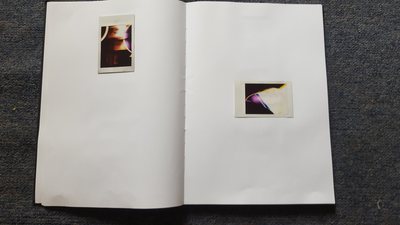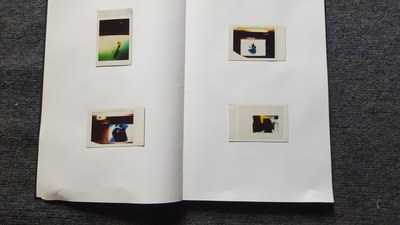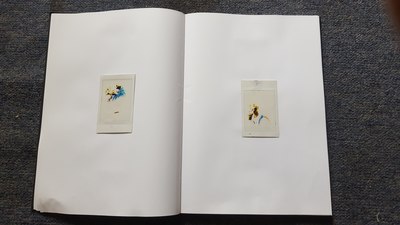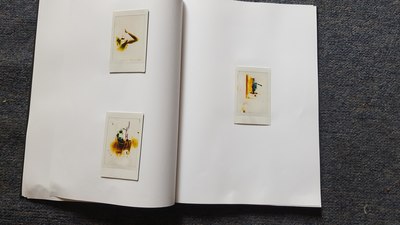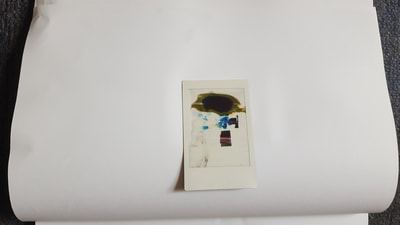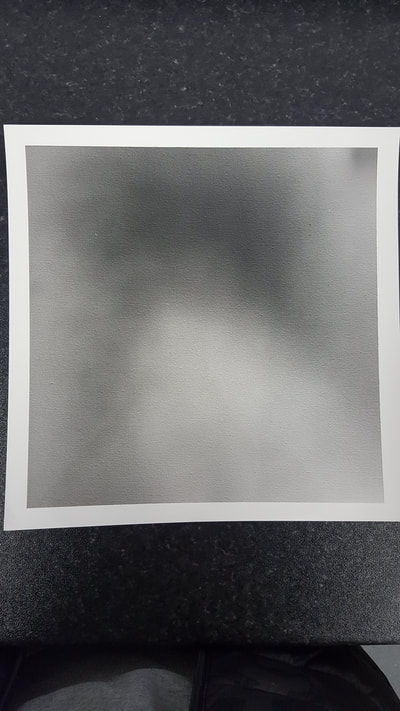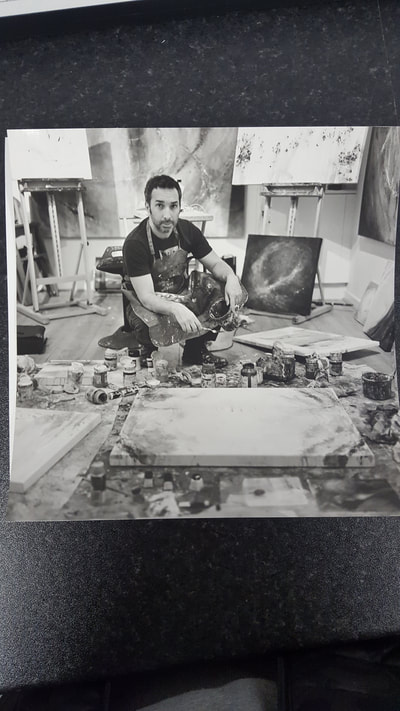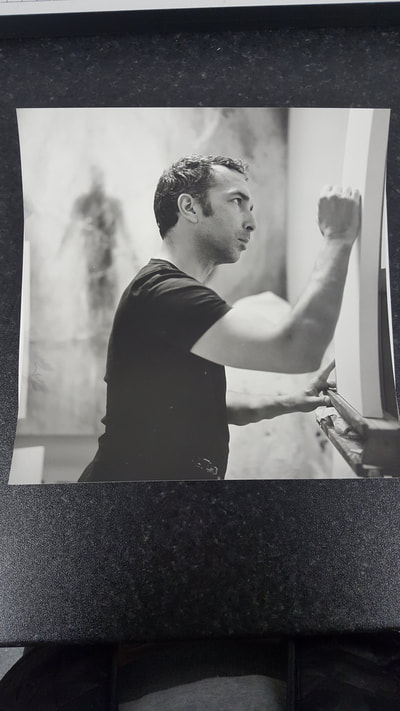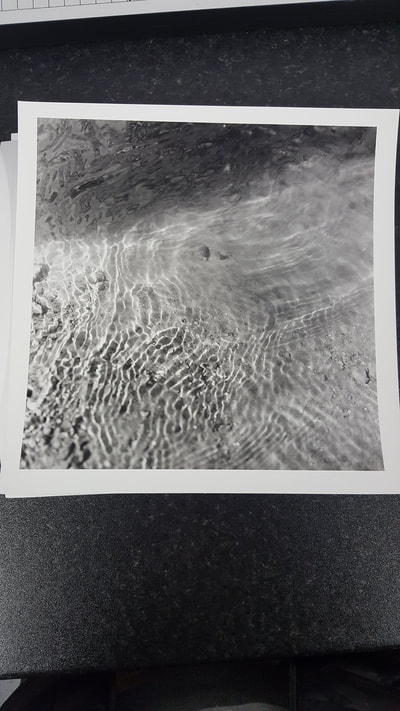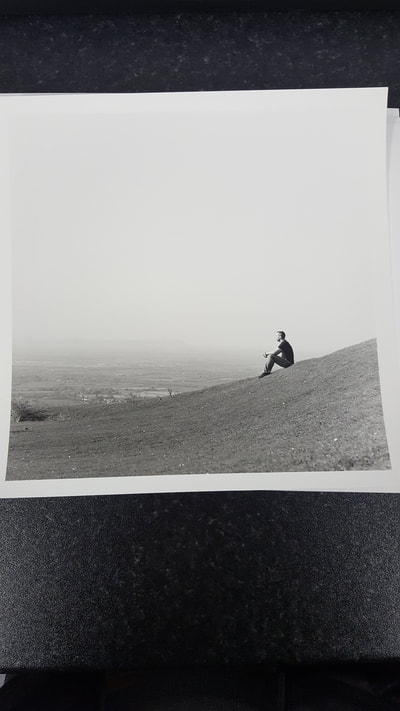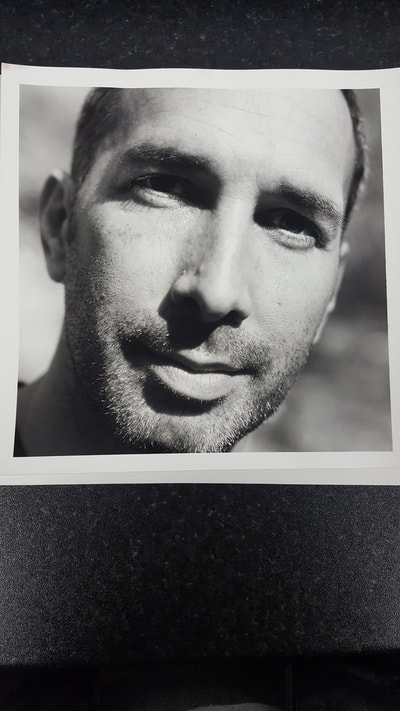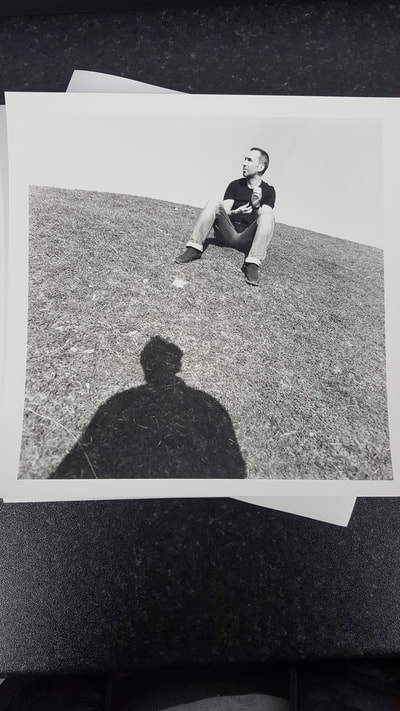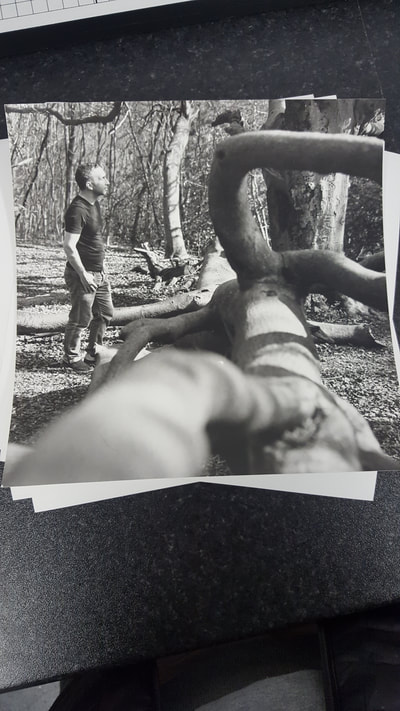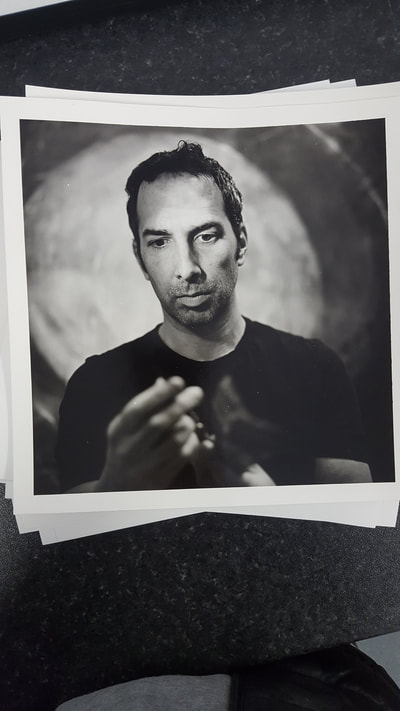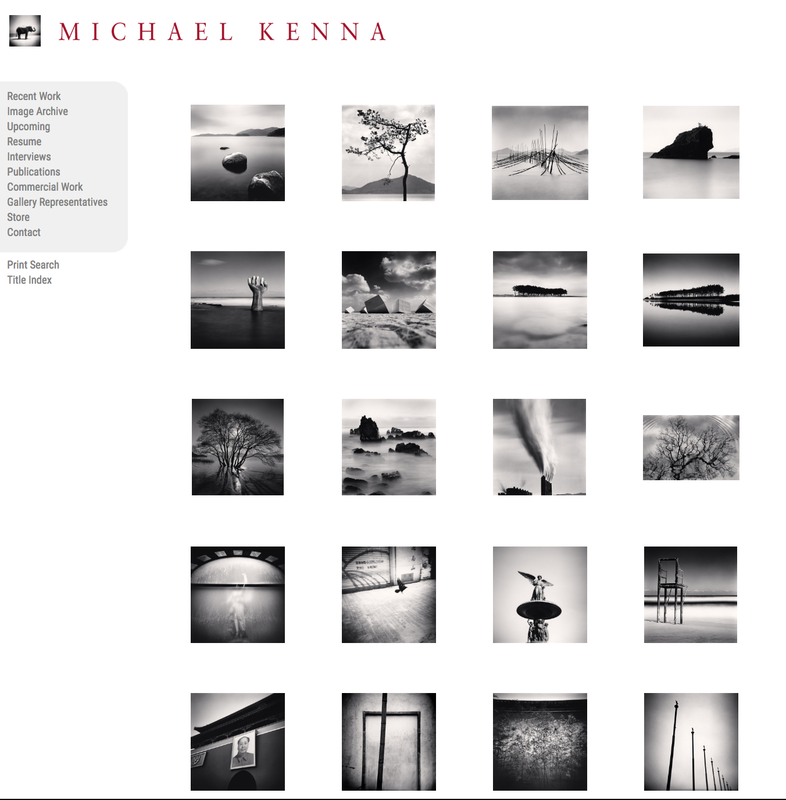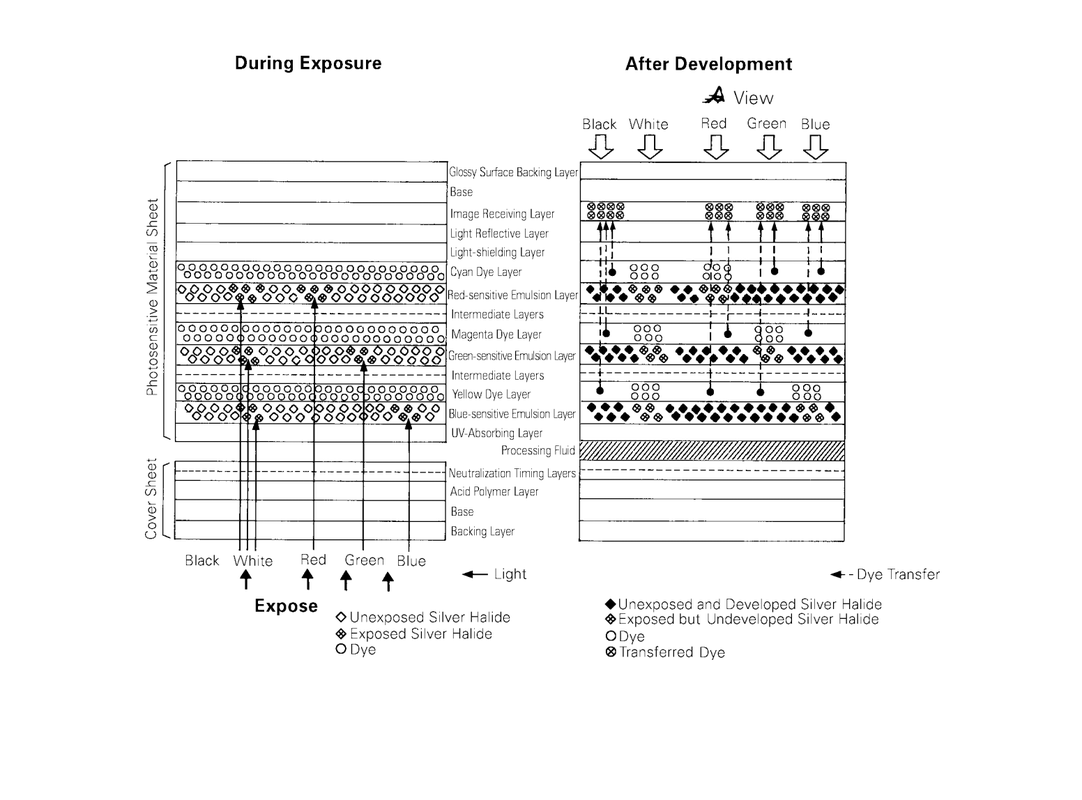|
After looking at various photo books in class and in my room, in the library, round friends houses, online etc I have concluded that what I want the style to look like and how ti will come across visually through design and layout. The book will be landscape, taking in account the image ratio and the fact most of the images I made were landscape orientation. I will lay them out similar to the books I have posted images of and will take into account whether there will be any writing at all. I feel that this project is all conceptual and needs to be writing somewhere, at the start or all the way through I just don't want to give away the whole concept because it is so deep and personal to me, but on the other side of the coin, the reason I made it was because I want to, and feel I am in a place , within the people around me etc that I need to talk about this, I have created something aimed at my generation, aimed at the current social aspects of communication through human experience and art. Opening a whole new platform to which gets at the same things as the great photographers, philosophers of our past and in the time right now. I will submit all physical images and tools etc to create to work, the only way that would make sense to order these images would be chronological from date of realisation/ creation, as the idea is the progression of my mind and realisation. This also anchors the work in a documentary narrative, allowing me to actually submit the work. The Physical book:
I made a physical book using a sketchbook and my images. This was the fastest way to edit and see how they would look, experimenting with layouts over and over, using over 60 images. I had to edit them down to no more than 30. I did this by moving them around and singling out ones that really represented the narrative. The book starts with the deconstruction of the medium I used. FujiFilm Instax Mini. Next to that is some Kodak out of date 1993 instant film I used to create some also. I show the tools I use and the insides of the film down to the chemical structure etc. As we start in this version of the book we see subtle colours that introduce the use of colour. They next few pages advance into deeper, darker colours, which have a similar aesthetic to one another. They are all in chronological order because if they were not they that would mess the whole narrative up, and you can see how I created them similar but slightly different every time I made them. I would stick to certain colours one day or another I'd try and capture myself inside the image, or objects instead of anything. (non representational work, Abstraction) Anyway I realised that I had way too many images of abstract scenes or representations of things, and the work was not focused on a self portrait series as obvious as it should be, from hearing what tutors and friends say, its self portrait, subjective self portrait. (The Subjective Self). So I edited and edited and finally came about something that makes sense to someone else, using a few images that seem to represent a landscape of my mind... you would know why this is by leaning from the work on Louis Parsons. The first few images of these scene have some introductory writing on the other pages, poetic to put you in a place, a paradigm and to put the viewer on the level I create at, at least try to. I quickly move into self portraits with no writing to suggest self consciousness and I feel the work speaks for itself beyond this point.
0 Comments
Evaluation:
I knew from the beginning this was going to be hard, It was a leap of faith, hoping I could capture something to actually submit as a photographic project. This was hard, very hard, researching and making this body of work, ripped me apart from the inside out, it hurt me in every way possible. I completely deconstructed my life, my experience, and my perception with the use of art. Realising deep down that photography and painting give me something to hold on to, they give me a purpose, the meaning in my life, its my passion in which I use to express my life, my mind, and the things I do. This project which has been directed through many channels of information, through different concepts of the world, objectively and subjectively. It has opened my eyes, my mind and my heart up to the full complexity and beauty of life, I have explored what makes it unsustainable. It stars with the deepest pats of the mind, It starts with gong into the depths of hell and resurrecting God. For me to really, really have a positive impact in the world, to get to the places I can see, the best ideal of myself, then I have to confront the most evil parts of me, figure out what it is that makes me up as a human, If I understand my mind then I can understand others too. At least its a good place to start. This has become evident after making this project and researching all I have, I can speak to people on this level that is self help, that is constructive in the positive aspect on life, at any level I actually have things to say that can wake people up to things in their lives too and to me that is beautiful, to me that is what art is for, that is why I create and I only wish to inspire my generation to become faithful in their own lives and with the world. Being as truthful to yourself and to others is the reality of positivity. Venturing into the depths and coming back with something to translate is and always will be a challenge, thats the whole point, confronting yourself, your ego, and looking yourself in the eyes and feeling happy, feeling good but most importantly feeling loved by your own reflection. For me it is these moment in life that need to be held onto, the need to be recorded somehow. Historically they would be archetypes, stories with no scientific objectively. A record of the development of the projects;
The first shoot I did with this project gave me a lot of disbelief, I felt very lost, I could not see where it was leading to, no one understood, apart from these top intellectuals across the internet. I kept creating work on my own in between painting and photographing objectivity, having realisations that my work was coming out negative, so in reality I had two images from one, some worked best negative and some worked best positive. The work quickly became a balance of lightness and darkness, the same ways great photographers and painters composed their work. William Eugene Smith once said “Never have I found the limits of the photographic potential, every horizon upon being breached reveals another beckoning in the distance.” Smith was inspired by Rembrandt, and Caravaggio. Chiaroscuro, It refers to the use of light and shadow to create the illusion of light from a specific source shining on the figures and objects in the painting. Smith’s visual composition was a balance between lightness and darkness. He uses a language that is biblical, dark for the shadow of the valley of death, and light for salvation. After realising i must be getting onto something at a level these greats once got at… or get at all the time, I started researching religion and the connection to understanding parts of the mind, it seemed very important at the time, and well it was the most eye opening thing i’ve researched in my life to be honest. People out there have read and studied these religious texts and topics for their whole lives and everyone of them says these stories and experiences are metaphysical connotations that explain the mind, God is not and can not be proven scientifically, that is just wrong, people who think that and most people who think of god today are confronted by that very fact, its called the objectively illusion, there must be something objective shown to them to be proven. Forgetting the fact that we live almost entirely in the subjective, we recognise meanings rather than objects first of all when we interact with the world… With this work I have singled out an important moment in my life in which I had the realisation of it all at once, what the subjective is and the objective, my passions, which come through in photography and painting and exploring my mind and of others. I would talk about every shoot I did with this work but honestly I made them everyday, figuring out how to expose, where to put the film, what to capture, how to develop, how to actually get an image on them… I created everyday for a few months, having a few break in-between researching, photographing and painting, realising my life is quite chaotic, in the sense of information flying around, ideas being met and dismissed, I had to order my mind and my current work, a combination of painting, photography and theory. Knowing this will be hard, I wanted to set my self a challenge that goes completely against peoples perceptions and the rules, something that looks path the objectivity illusion and into the subjective reality that is just as important. This work is my transition into adulthood, it contains the moments of realisation of the world I live in, an enlightenment, a connection back to God, a connection back to myself. Most importantly I have found ways to communicate this to the rest of the world, by creating my own artistic idea, my own aesthetic, from completely my own image. A reflection on the ethics of my working practice.
In my room on my own, quiet and dark, no one was disturbed, no one knew I made this work. The only ethical problem I can see in this work is from someone else perspective, someone who believes God can be proven with scientific reasoning, where as this is completely wrong, God is a metaphysical ideal. I will be using metaphors to describe and explain the metaphysical and finding god at a deep level inside of myself. I cant really go wrong if I talk about myself and my own ideas. Well there is definitely wrong ways to go about it, but I need to figure out my own life before attacking anyone else’s. Im a photographer and a painter and I have used them to address the unsustainable issue in a community context. Possible subjects- The process of finding subjects;
To say anything negative about the world I must confront myself first, I can’t try and put the world right when I’m corrupted myself. The subject has to be me and my mind. Figuring out the subject was very hard, when I knew it was me then I started to take more and more self portraits, combining my process of development, this made them impressions of my subjective self, A representation of how I could see myself, more clearly as time goes on. Collaborative practices:
Through making projects in the past, I came about ideas of abstraction, through inspiration from local artists… Painters, poets and photographers. Articulating what I have leant so far, and combining practises and ideas to come about a more ordered and deeper project in which my knowledge of previous work is implicit. just more advanced in my technique and articulation. Combining two main ideas that I am familiar with, painting and photography (Abstract Impressionism and Documentary Photography) allowed me to collaborate with myself and come about a body of work that is a combination of these practices, that holds the respected properties of each. Documentary photography captures the objective reality and Impressionism captures the subjective reality through which my being and conscious action, in creating art for example, is a balance of both. Proposal:
I wish to carry out a documentary narrative which looks into an unsustainable community. Starting with myself rather than anyone else, realising I make up a community, I am going to be creating a project that reflects my personal subjective understanding and development and its potential in a community context, through the expression of documentary photography in combination with painting techniques and theory to create a documentary impressionist style. The ideas of which came to me through collaborating with a painter for sustainable communities. I will try to explain how my journey of ideas transitioned from unsustainable thinking to an ordered perspective of my life and experience and potential in the world. Using very current materials such as Fuji Instax to communicate at a level which is relevant to todays context and to aim my work at an audience of thinkers who use art to express themselves. Initial Ideas:
What is sustainable? We have to think of this in the terms of the exhaustion of our own cultural forms, thats what we are living through, a global dying created by our dying cultural forms and the vitality of the cultural forms that we see in the primitive people or pre-literate… they have nothing, but they seem to have something we can’t seem to get a grip on… a dynamic equilibrium with their environment and piece of mind in the experience of the moment. These are the two things we don't have, as a society we can’t seem to make peace with nature let alone peace with ourselves. We are all in a search for a little piece of mind at least. The shamans are the centre of this environment in the amazon, we see them as ancient ancestors of the primitive world. It’s obvious we are destroying the planet at a dangerously fast rate, amazon forests being turned into cattle ranches and the trees used for furniture and materials for consumption with big corporations attempting to slow down these processes and regulating the land, on the other side of the coin we also see US government, DEA etc, are planning to carry out the de-foliation on the amazonian basin, there is a schizophrenia that is not academic, are we trying the get the patient well or pulling the plugs one by one? We seem to be acting in both dimensions simultaneously. I think this is because our culture has not yet awakened to the depth of the crisis that surrounds us. This is a perfect image of us being at war not only with ourselves but nature itself. Our culture is in trouble, a terminal crisis, it can go one of two ways, horror beyond your wildest imagination or breakthrough to dignity, decency, community and caring beyond your wildest imagination. Now where to look for models, where do you go? The new moral is for the shamans to take the idea/metaphor of the jungle, which is of tremendous wealth, variety, outpouring of form and energy, potential forfilment of various patterns of flow, to take that and to enrich our own lives with it. This is done by empowering the presence of experience, and the individual, the main thing you get with primitive people, they are in the moment, and they know how to have fun, how to work and how to live, the reason they understand this is because they are focused within the confines of the felt presence of the experience, they do not live in abstraction but completely understand it. I feel the real artist is an embodiment of a pattern of flow, they balance of the line between present experience and abstraction… chaos and order, and translate the world into these abstract ideas and memes. The product of creating work with the understanding of the individual experience is the connection between physical and metaphysical, I feel this is important because the subjective human experience is the most complex thing on the planet in line with nature as it is nature, and we need a self understanding as well as a social understanding of these complex facts of existence. We have got it wrong so may times and are still getting it wrong, but we as artists have an insight directly with addressing these problems so we can hopefully do things positively and have a life that feeds the natural world and enhances experience. So where is all of my work leading? In my essays on art and photography I discussed that artists are the ones in the social climate that sustain, alter, expand and criticise the current or historical ideology that we use to communicate/ interact with one another, politically, socially, artistically and as a whole race. "Trusting your intuition, experience and theory helps you find your way. Artists find their way through making works of art. Painting Sculpting, etc. is their way of thinking on life and reality. The experience of art will enhance your intuition and acknowledgement of life and reality as it is”. Fre Ilgen, Im going to trust my intuition and read good books, (geneology of morals) (Tao) etc etc... Painting has inspired me recently and I have made a break through in my visual thinking by reading into the works of Kandinksy, picabia, pollock etc etc. To me it seems that these great artists painted to articulate, figure out and to make physical their ideas, greats because of great ideas. Painting is a way of visualising your thoughts, allowing them flow and to order them in such a way makes sense to you. if you can make your thoughts physical then you can basically solve what you need to work out. This way of working and thought process is quite simple in and of itself, but on a whole this ideology is a very sustainable way of staying on top of your life and thoughts, in theory you can work out almost anything that challenges you as long as you have the knowledge into those areas of interest. How can you take unsustainable processes and make then sustainable? My community is full of unsustainable processes. Talk about the exhaustion and the addiction to wanting the new thing, make things bigger, expand everything, (take make and break society). In the fields below analyse the physical and metaphysical impacts on humans. . Industry- exhaustion of the lands materials and spaces. - positives and negatives. - statistics. - photographers. . internet/social media/electricity. - positives and negatives. - statistics. - photographers. . night life/addictions/habbits. - positives and negatives. - statistics. - photographers. . photography/proccesses. - positives and negative. - work. Right because we are at such a ripe age with information flying into our senses, university students have a lot to deal with, to articulate, to get right within a certain amount of time otherwise you will fall into the spiral of everyones thoughts caught up in the world of chaos, disorder and unsustained consciousness a place which we can all see and argue we don't want to go. The chaotic mess of social media is a perfect example, from day to day it is used, overused; people dedicate their lives to icons and status in society and with no doubt the creators of these systems knew what they are tapping into? its control if your on the lower end of it. But on the other side of the coin this modern day miracle; the internet, allows any information about anything to be published on a web of information in thin air and it can be accessed by anyone anywhere at anytime. bringing the world closer metaphorically this also creates the contrary, there is so much shit out there that people get hooked into and stuck in a vicious spiral of chaos that is hard to wake people up to. In a society in which we have no fears but whats in our heads. In the East they fear what they see, in the West they fear what they don't see. This is probably because we genuinely don't have anything to be scared of apart for natural death. fuji work: creative people are always stepping outside of evaluation structures. this work may not fit perfectly into the conventions of documentary photography but I stepped outside of it to learn something about myself and my perspective, after understanding of my discipline. high risk, high return strategy. abstraction is very very powerful, for example mathematics is the most pure abstract human language. we are always studying things in abstraction from the full complexity, thats why we do experiments, to try to get rid of a lot of the complexity of the natural world that somehow you assume that isn't relevant, of course you cant do it 100% of the time because the world is always there. but the point of experiments is to try to get rid of as much as you can. the geneticist is studying fruit flies for example, they are going to want to make those flies as identical as possible, obviously they are not but pretends they are. But what we are doing is studying them in abstraction for their properties, everything we are studying is an abstract object, there is now way to perceive it in any other terms. This is called idealisation, but that is a highly misleading term, it suggests that you are moving away from reality, but what you are really doing is trying to get to reality, trying to cut away the interfering factors that keep you from understanding reality, so you idealise to abstract things. but that is a way of finding out what reality is. This is the core of science since Galallao. Documentary photography- abstractfying myself and my ideas to come about a more ordered sense of the world I operate in. Painting and photography. They work hand in hand, photography allows me to capture the objective world that I'm interacting in with the use of light and time. Although fine art photography I would say is parallel to abstraction. Painting allows me the complete freedom to experiment/understand more about the subjective world, It allows me the make my thoughts physical, to figure out problems and come about new ideas. To me this is amazing and a real breakthrough in my experience of the world through art. Its about going into that cave, finding the dragons/ evil in my reality, turning chaos into order- out there in no mans land, in potential (the world) there is threat, mortal threat, but there is also endless opportunity and riches and wealth, and the possibility of attracting someone, and all of that. You can’t just be afraid of it, you'll just stay in your burrow most of the time like most animals, especially nocturnal animals. But Humans are not like that, we are not only prey animals but also predators, we are also crazy chimpanzees, we are always messing around with things, with our hands and taking the world apart and putting it back together, we are extremely exploratory and trouble making. We don’t just run from dragons, we hunt them down. There is a story here. The oldest story that we know; there is this bounded space, a walled garden, a city; cities had to be walled because the barbarians would swoop in and steal all of your stuff, that would be pointless. So you have inhabited space, inside that is your dominance hierarchy, so all your primates knew exactly who is who, inside that space so you didn't fight each other, you could predict each others behaviours and you saw the world in the same ways, so you are secure. But there is the threat of those walls being breached, there is always something out side of it that is a danger and that is signified by a dragon. This dragon is a symbol, imagistic symbols have an ancient language and is referring to something something that is eternal, so it lives in a cave, in the underworld, its an underground thing. you can imagine what that is like, and sometimes this happens in ignitions rituals among archaic people, when they initiate,usually the young men, because nature initiates woman all by itself. usually the young men will be put in a cave and left there for god knows how long. But you have to think what is in a cave, caves are dark, really dark, not only is there not only is there what is in the cave, what you think is in the cave there is also what you imagine might be in that cave. So when you are in the cave and you are alone, you are confronting the demons and devils and monsters of your own imagination and so you have a chance to deal with that and over come that and is part of growing up, learning to face the things that terrify and upset you, and being able to re-cast them and put yourself back together. that is part of the initiation. If you are not wise, the world will whollop you. It will destroy you. the unsustainable morality of education at the moment, it doesn't teach the transition into adulthood but academic. faith and high order abstractions patterns of behaviour the big five personality traits psychometrics- self report construct validation- a contract is a representation of something psychological that hypothetically exists hypothetically- does fear exist, love, shame, guilt, pain? abstraction is very useful, it is hard to operate with out it. in fact if you cant take fro granted what something is, but instead have to think of lower level how to make it, then you encounter a challenge. Through thinking about an unsustainable community project for a few weeks, starting with the unsustainable scientific process that film goes through and is used to create and discard of the mediums involved, silver as such. My ideas evolved and meanwhile I was researching philosophers, artists, photographers and speaking to people that I was working with and my friends. I came to the conclusion that if I was to start a project on unsustainability, I can not start deconstructing parts of the world, until I have looked at myself, and confronted unsustainable ideals and actions in my life which I am already aware of. Smoking, eating rubbish and subjectively emotions, passions, commitment, ideals what is apparent to me is that the most unsustainable thing in our lives is our own minds, As Humans we have been trying to figure out this mystery of consciousness for way over 12,000 years, and have been documenting our own experiences along the whole of this time. Trying to find the deeper truth and meaning in our lives, a wiser insight into life. re-ordering and constructing ideals of reality, good and evil. lightness and darkness (chiaroscuro) is how artists adapted biblical language in painting, light for salvation and darkness for death, the works of Rembrandt and Caravaggio reflect this in their own art. “Never have I found the limits of the photographic potential, every horizon upon being breached reveals another beckoning in the distance.” I wanted to create original work, something what can not be reproduced, as Walter Benjamin explains in ‘The work of art in the age of mechanical photography’, that when art is re-produced mechanically, then the Aura of the work is lost. Paintings are a good example of this, when you go to a gallery you want to see the original piece when you can always view the art work on your phone or in a book as many times as you want, but there is a power, an Aura that is bound to the original. But current cultural values dishonour and devalue art and especially photography with the desire to fill our lives with images and representations of real things. "In photography, display value starts to drive cultic (tradition) value back along the whole line. However, cultic value does not give ground without resistance. It occupies one last ditch, and that is the human face. It is no accident, not at all, that in the Cult, of recalling absent or dead loved ones, the cultic value finds in its last refuge. In the transient expression of a human countenance in early photogrpahs, we catch one final glimpse of Aura." So being inspired by a local artist and art theory I wanted to create a photographic project using modern day film materials (FujiFilm Instant) and combine painting with the work. Picking up on unsustainable processes that are used by many amateur photographers; Chemically a very toxic process. I produced this work on Fuji Instant which retains more than one root practise of mine, photography and painting. The work questions/ entertains thoughts of feelings, reality, time, space, colour, form and identity. The originals are negative palm sized images to which I will explain the journey. I created these FujiFilm Instax instants, In early 2018, I was trying to think of a way to combine painting and photography at the time. Thinking of using glass plates and liquid light and various ways to capture portraits, through speaking to tutors and researching into the art works of Peter Beard, Ellen Carey, Mike Ware and many more, I became fascinated of how they used such simple tools to capture these amazing polaroids and cyanotypes etc. I realised a more contemporary way that is quite available and something I have not seen much work on. I have created a body of work that shows the journey of my ideas, starting with the pure curiosity of wanting to find my own way to figuring out how to get an original piece of work. The process combines the two perfectly, capturing an image on film before its processed uniquely, each one with tools and my decisions. So i'm painting with light and also painting with developer using tools. Seeing these images come out in the moment clicked with me one day that maybe i'm already doing it. The fact these physical film creations are what they are, showing the journey of getting to the end of an idea and envisioning it all. something that can not be re produced again makes them original to me. Starting with patterns that recur throughout nature everywhere, fractals; the patterns Hiroshi Sugimoto captured using electricity, water and film to make a statement on his discovery on how the first resemblance of life came about on the earth. These first images create a scene; an organic one, something that changes and adapts to the world around it, reaching into the empty space ahead and cutting through space and time. As you see in the first 6 images that they are all objects and shapes and colour and subjective representations, which just happens to question space, time, colour and form. This shows the birth of photography only as I would know it. As we move through I start taking self portraits; a realisation of these outcomes, I wanted to place myself in the scene, I figured out how to create frames and to put myself in them or in the open space or inside colour or an object, I figured it out after around 10 double packs of them. I made them as simple or as complex as I wanted from one exposure to six; layering them up and developing each one as I wished, some images I would spend half an hour setting up and envisioning - 10 minutes shooting it and a minute to paint. To me this combination I have found and figured out myself with a bit of time and space to breath shows me how to come about an original idea; for it it was to go against the rules of the whole process. The polaroid was seen as an object to be discarded of, a dud image before the 'real photography happens', to me this original image of the moment of figuring out the scene and how to light the subject; that can not be replicated is just as important if not more important to the photographer. The information that was received allowed and gave the photographer trust for the whole shoot. The whole realisation is contained in those moments. 'But i'll know my song well before I start singing"- Bob Dylan. The images are in chronological order of creation in negative first and then positive. Whilst working on this documentary narrative I was painting abstraction at the time, using it as another form of expression of my mind and abstraction of the world.I was focused on this documentary narrative for a few months and along side created photographs I would listen to what Louis says about painting and abstraction specifically. It took my interest completely, I stared reading into the works of classic and great artists, philosophers and lectures; picking up books from the library and from shops looking into idealisation and abstraction in its entirety. I one day stared to paint at night when my thoughts were fluid and I could visualise colour and form in my head, with no distractions of the outside world I could focus on the ideas and express them naturally using the movement of my hands and paint. I stared to use acrylic at first as it dries very fast and I could layer up colour in a matter of minutes. After painting expressionist abstraction for a few months I picked up oils and started to see tones of colour completely differently and I could recognise them in nature and in everything I looked at really. Being so fascinated by discovering a new medium I found myself incorporating my photography into the work.
So I stared painting from this book called 'Hidden Art In Nature' and it depicted macro shots in colour of the intersection of leaves and tree barks and natural patterns that occur throughout nature. So I stared making impressions of these images and spending longer and longer on paintings to make them more complex over time. The latter part of this Journey resulted in me wanting to combine my documentary techniques and painting, A way that was original to me, creating from my own image and ideas. I seemed quite lost and bombarded with information seeing the world through the eyes of a black and white photographer and a painter at the same time, I was not too sure where to look or what to focus on at times. So I decided to come up with a way of combining the two. incorporating the work into one aesthetic. Painting with light and painting with developing chems. Anyway I came about the original idea about a month into photographing Louis and have expanded and evolved it many many times. It goes deep but for a reason. With the context of wanting to go inside of myself as deep as I could go and bring something back to translated as a message, for me or for someone else to learn from. The journey I have gone on with Louis is not only what we would both see as apprenticeship, in which the student learns from the mentor, the techniques and processes involved in that specific field of expertise (painting/Soulscaping). Louis also expresses the things he has learnt from me and about photography; the analogue and chemical process specifically, topics we both express interest in and how my influence has shaped his art as a result. To me this truly is what community is about, using the most relevant mediums and language to communicate to local artists and to take what I know into the heart of Cheltenham's community and to spread my knowledge of my art and to learn something from someone who is willing to share their journey and ideas. For me documentary photography has allowed me to interact and have a deep insight into what drives this artist; and to my surprise Louis is inspired by the flow, patterns and processes of nature. I couldn't thank Louis enough for what he has taught me about being an artist in the contemporary world. I have learnt how to operate a whole idea through painting itself (which is totally hyperthetical) and using the web of the internet to connect people. The totality of Louis's art is absolutely beautiful and is expressing itself and enlightening the people they were created for in their homes, in schools, businesses and on my wall. Doing this project I have consequently explored myself and my own perspective through my own photographs and through what Louis has to say about our interactions, simple through the sheer nature of what Louis does, he is a psychoanalytical painter who abstractifys your thought process into painting and allows for you to see parts of yourself to confront and to conquer; to overcome boundries at important points in your life. Aiming at people who are expected to not have much of a grasp on how deep it goes, Louis really is impacting peoples lives very positively. We have discussed creating a book with my documentary work and his paintings and writings on theorem. Simple to combine out ideas and to make a statement not only in my personal achievement but in the world of photography and art itself. What I'm going to do to improve...
I have realised a few things doing this project, from the quality of my negatives and their relation to how a print will be created. I have learnt to take more photographs in the moment to capture many images of those moments to show the interaction and just to visualise the work whilst shooting it. I have basically learnt how to edit in my head thinking of not only the composition, exposure, depth and where the light will fall etc, but how the contact sheets will look and to just visualise my work more coherently. I have learnt that I need to focus more of my time on printing, it is the last process of the creation of analogue photographs and is the most rewarding and I don't spend enough time to say I really make the most of it and totally understand it; which one day I want to have a very good grasp and portfolio of prints. I have learnt what it means to connect to the transcendental, or your 'gut' feeling or call it 'god' whatever... I bought a Faux leather box for £11 as It is specified for archive and looks very nice. I just love the colour and texture of the box, its nice for the work to be presented in something that locks and is secure, strong and deep enough or lots of work.
The contact sheets and prints are sleeved and projected. The final 10 prints 4 warm tone RC and 6 warm tone fibre. In this order... starting with a blank canvas most importantly. The prints are sleeved in 10 x 12 plastic sleeves, my images are not a standard size so I found the best that would fit and they look very professional.
Here are the test prints I managed to keep, some of them got lost with the business of everyone pulling their prints out and drying them... Most of them are here. They show how I tested the Contrast and exposure times. I would do two test orints of each image... one test on gradient 0 and one test on gradient 5 at 10 second intervals. This would allow me to see what exposure and contrast values to use or to even combine in split grade printing.
I test printed for every image and contact sheet. “Photography is inherently an analytic medium, where a painter starts with a blank canvas, and every that mark she/ he makes on the canvas, makes it more complex. So painting is inherently synthetic, photography is the opposite, a photographer starts with the whole world, and every decision brings order to it. To my mind a photograph is solved, more than it is composed. A photographer combines a perception of the world, a perception of photography, of art, of perception, about themselves. A photographer combines a perception with an understanding of these perceptions, essentially with an understanding of photography's limitations.”
Stephen Shore - Photography and the Limits of Representation- https://www.youtube.com/watch?v=V_ZUh8FN1qk This is the set up I used to process my film, These images below are taken from one of 3 processes. I will explain this one specifically as it involves two types of size film and different ISO's and consequently different times for each one. This was the last shoot I shot with Louis I felt most confident with this one and it went very well; three rolls of 120, one Delta 100, one Delta 400 and one HP5+ and one 35mm HP5+. The location way The Location;The community is pretty much connected through the internet and social media. Louis often does live videos and has had various documentaries on him already. He reaches hundreds of people a week and receives a lot of positive feedback about his art and from clients he has been commissioned for.
Website: BLOG; https://www.louisparsons.com/blog/ RECENT WORK; https://louisparsonsart.com/ ORIGINAL IDEA (SOULSCAPING); https://www.louisparsons.com/soulscape-process/ Vimeo Account: https://vimeo.com/louisparsons USEFUL VIDEOS I AHVE WATCHED; https://vimeo.com/262432360 https://vimeo.com/261176750 https://vimeo.com/260220573 https://vimeo.com/129592981 Facebook: https://www.facebook.com/louiswparsons LIVE VIDEOS; https://louisparsonsart.com/collections/the-soul-art-collection/products/caught-in-the-flow-of-grace-ii-limited-edition-print You can see from his page that he is posting everyday and is in contact with people who want to buy his art and people who have received his work. He is constantly posting live videos and talking as up to date about his art and the world and the people his is currently working with. Instagram Account:https://www.instagram.com/louisparsons/?hl=en Louis is always posting on social media and only recently has he started to use Instagram, going all the way back to 2012 you can see the evolution of his work and the complexity of it visually. He is also using Instagram live video recently to reach more people on this platform. Saatchi Art: https://www.saatchiart.com/louisparsonsAbout Louis ParsonsLouis Parsons has devoted his life and artwork to exploring the mystery and beauty of human potential. This devotion led him to pioneer a new form of commissioned art called SoulScaping, which celebrates the unique essence of an individual, partnership or family. These paintings are an exceptional kind of self-portraiture, capturing the inner dimensions of a person or couple rather than the physical. Louis has been the Guest Artist at the Four Seasons, Kuda Huraa in the Maldives for the past 6 years. In 2017 he will be Guest Artist at Gili Lankanfushi in the Maldives and Four Seasons, Serengeti. Louis also uses art to host workshops or commission paintings for businesses to help them visualise future goals and objectives and unleash the creative energy that lives within them and their company. His VisionScaping has been used with Mars, Ebay, Microsoft, PLC, RBS and many more. One of his most encouraging moments was when one of his SoulScapes raised £120,000 at auction for charity. When he's not painting Louis loves to surf and spend time with his wife and children. Less Exhibitions:Louis holds various exhibitions throughout the year, usually in Cheltenham or London. These are advertised on our social media on Facebook and Twitter. The first shoot with Louis happened one day when I started to take my medium format to show him to explain what I take pictures on. Being an artist he loved the fact I was using an old medium of film and staying in touch with the historical side of my practice. These are the first three image I shot of Louis the first two are obviously his taking a moment out of his painting for a second to focus on the camera or on me. The last frame is Louis talking to Will Price about prints and painting techniques. Shot on HP5+ and developed in Ilford ID-11.
A lovely example of square format landscape minimalism. Excluding things from the frame, abstracting the landscape of the UK and many other countries. This work is not only about the negative but its all about the print, each one of these images has been made in the darkroom specifically to what Kenna wanted the aesthetic to be. He has captured the landscapes using long exposures and filters. This work speaks to me because The desire to paint with light at every level of the photographic process is all there! The print is the final production and is the thing that the photographer wants to get to when it comes to presenting the images they have taken, Very nice work and is a good study for printing and composition of the square format.
Materials: I will be shooting shooting on Square format as that is what I am comfortable shooting with, wether it be portraits with a 110mm or context shots with a 40mm or 80mm, I love to fire the camera. More importantly I have equipment that wont fail on me or at least I understand what is going on... Medium format is very easy to understand. I also shoot 35mm in-between to capture fast details and moments that work better aesthetically with the rectangle aspect ratio, using wide angle 24mm and 50mm lenses; I love to fire frames in moments to create contacts that show how I approach a situation or a scene and how I come about capturing it. I feel you can tell how the photographer thinks and what captures their attention through the contact sheets, a contact sheet is like an abstraction of moment happening and you can see it unfolding over however long. It might be 10 frames over 30 seconds or 10 frames over 2 minutes for example. The reason I love to shoot square format is because I feel it sits in its own category of aesthetic and has a certain elegance to the composition that seems formal. Although I find it a challenge to fill the square sometimes with portraits or find it hard to know what to include but recently I have found myself excluding things and being quite minimalist in my approach. This is my research into photographers like Michael Kenna, Vivian Maier, peter Marlow, eggleston and many more coming through in my visual thinking. The film I usually shoot on is Ilford HP5+ as it yields very nice detail, its a thick strong film and can be played around with quite a lot, in exposure or in developing methods. I will also be using Ilfords more expensive variety of film, Delta 100 and 400. This film is meant to have a more complex crystalline structure to yield more detail and finer grain. In fact the silver halide crystals are different shapes to HP5. I have shot this film before and after experimenting and seeing the results for the first time the Delta definitely has a nicer grain structure allowing for a little more latitude in the extreme highlights and shadow, and seems to be a bit more contrasty. For printing I feel Delta Negatives are a lot nicer and are just that little bit thicker than HP5 and is what you want to be able to really paint with light. For some reason I always find myself underexposing HP5 or at least I have noticed my HP5 negatives could be a lot thicker to help with the quality of re-production of prints and being able to create quality tones in prints. After researching photographers I have also realised it is about the print, not just the negative or the digital scan which can be manipulated anyway you like. but the original hand made print. Painted with light that shines through the negative once again and turned into a positive enlargement under a controlled processes which allows for time for light to imprint the image on the paper. I absolutely love how simple the processes of black and white actually is and I completely understand why many photographers say black and white is the most natural and pure from of image making. The negative and positive. I have recently switched from suing Kodak D-76 developing chems until recently, I have stared to use Ilford ID-11 which seems to be have more consistant results with me, and easier to control a little bit more time to play around with in developing. Nice fine grain developer that does what it needs to do. I will be using Ilford black and white, 9 and 1/2 inch x 12 inch warm tone RC paper, 12 x 16 Fibre classic paper to be printing on in the darkroom. This paper is just personal preference and is what I usually use, the warm tone give me more than twice the time that standard RC paper and it yields more latitude in tones. The paper is not white but an ivory colour and this really complements the highlights in most of the prints I have done and I absolutely love the greys it outputs, very nice. The fibre classic is white and is very thick paper and delicate when submerged, The fibre is the best quality and deerest in price for a reason, the tones it can hold and the detail is amazing, it feels good quality and will last a long time. For archival reasons I would choose to print all of fibre paper but it is way too expensive for me. The Ivory RC is the closest to fibre I have found and feels almost the same thickness. both amazing paper I will be using for sure. Photographing: The skills I will need is to be able to understand all of these processes and materials, chemically and abstractly. Which I do, after photographing on film for 5 years I have a good grasp of medium format film and the properties it is made up of, I have experimenting with many many different techniques and shoots to find the limits and the use of film through many different avenues. I always develop my film using D-76 and ID-11 and had print it. I love the whole process of turing those moments captured on negative into positives, it will always fascinate me and the people its made for. The skills I need to develop is interacting with people and being able to allow people to be comfortable in front of the camera. I like to talk a lot when photographing and take images in certain moments, without the subject focusing on me too much running round getting the angles I want, this allows for candid emotion and poses to be captured . I also feel that what really ties the aura of portraits to the quality of the print and the aesthetic is the connection of the subject and the photographer, it can be seen strait away how open the subject is for example. I feel after looking at a lot of magnum contacts and ways people shoot, I feel it is good to have a lot of film on you and shoot more than you need, which is why the module is asking for 10 rolls and just 10 images in the edit. Its best to fire 3 or 4 or more shots of the same moment or image, with a slightly different angle or exposure just to make sure you don't miss anything. I am getting better at shooting fast through my social documentary work with the local hip-hop artists in Cheltenham. This also helps with confronting people and having to assert myself to get the shots I need. I will also be photographing Louis inside his paint studio, where I will encounter a lot of trip hazards and not much space to move around in. I feel limitations allow for creativity to really take over is certain situations. I wish to carry out a documentary project which looks into the community of painting in Cheltenham, specifically focused on one painter named Louis Parsons. I met Louis one day after walking past and seeing his studio filled with colour and something caught my attention and I had to knock a few days later to just have a chat. We got on straight away and after speaking plenty of times about different artistic movements and techniques I learnt about the community Louis has created, a few hundred people of all ages, in which he shares his knowledge on painting and the world. Running workshops and online tutorial lectures, Louis is a very good example of a freelance artist. One piece of his work has been sold for £120,000 in a charity auction for a 10 year old girl named Tilly. He has leased and been commissioned by major companies for paintings and prints. Louis has come about an original idea that is called Soulscaping, it is an imaginal and creative process he has refined over two decades to not only create art work but to define and master his own life experience, he has managed to work with leadership teams and groups to help them define theirs too. What this allows people to do is to see the world through the eyes of an artist; to create your life experience as an artist would approach a blank canvas. A daily, weekly practice to help define those life experiences that you really want to unfold in your life. What really appealed to me is that Louis is so focused on the individual and the experience of the moment, and understanding thought processes, after reading similar theory such as Jordan Peterson and Kandinsky. I have explored the sustainability of the lone artist and how Louis is helping people sustain their lives too using the language of art that many people can connect to. I wish to capture Louis creating his art work and place him within the natural environment of his locality and areas of reference. I wish to incorporate the primitive patterns and details found in nature that represent the sustainability and ordered structures of life and reality to try and get across the power of this individual.
BACK UP PLAN- A field of work in the public sector that sustains the public domain... Council, Police, health services etc. A documentary narritve that looks into the sustainability that certain job roles in the public sector maintain. I took apart a FujiFilm instant image down to its insides.
This is the developing ink cartridge that is at the bottom of the film. I cut it off of an undeveloped image and opened it. The first thing I realised were the patterns created by the thick alkali chemical developing solution; Fractals created in the process of opening the cartridge, This shows how air travels under pressure through a liquid on solid material and separates naturally. This organic structure which if looked closely enough at can resemble anything with a bit of imagination. To me this is very interesting it is these patterns that show the natural structure behind a lot of things (everything?); from fingerprints to lightening, the structure of our brains to the mycelial web underneath our feet. A translation of the simple yet widely complex nature of the world. This symmetrical object represents the brain of the images I have made. I wanted to create original work, something what can not be reproduced, as Walter Benjamin explains in ‘The work of art in the age of mechanical photography’, that when art is re-produced mechanically, then the Aura of the work is lost. Paintings are a good example of this, when you go to a gallery you want to see the original piece when you can always view the art work on your phone or in a book as many times as you want, but there is a power, an Aura that is bound to the original. But current cultural values dishonour and devalue art and especially photography with the desire to fill our lives with images and representations of real things. "In photography, display value starts to drive cultic (tradition) value back along the whole line. However, cultic value does not give ground without resistance. It occupies one last ditch, and that is the human face. It is no accident, not at all, that in the Cult, of recalling absent or dead loved ones, the cultic value finds in its last refuge. In the transient expression of a human countenance in early photogrpahs, we catch one final glimpse of Aura." So being inspired by a local artist and art theory I wanted to create a photographic project using modern day film materials (FujiFilm Instant) and combine painting with the work. Picking up on unsustainable processes that are used by many amateur photographers; Chemically a very toxic process. I produced this work on Fuji Instant which retains more than one root practise of mine, photography and painting. The work questions/ entertains thoughts of feelings, reality, time, space, colour, form and identity. The originals are negative palm sized images to which I will explain the journey.
I created these FujiFilm Instax instants, In early 2018, I was trying to think of a way to combine painting and photography at the time. Thinking of using glass plates and liquid light and various ways to capture portraits, through speaking to tutors and researching into the art works of Peter Beard, Ellen Carey, Mike Ware and many more, I became fascinated of how they used such simple tools to capture these amazing polaroids and cyanotypes etc. I realised a more contemporary way that is quite available and something I have not seen much work on. I have created a body of work that shows the journey of my ideas, starting with the pure curiosity of wanting to find my own way to figuring out how to get an original piece of work. The process combines the two perfectly, capturing an image on film before its processed uniquely, each one with tools and my decisions. So i'm painting with light and also painting with developer using tools. Seeing these images come out in the moment clicked with me one day that maybe i'm already doing it. The fact these physical film creations are what they are, showing the journey of getting to the end of an idea and envisioning it all. something that can not be re produced again makes them original to me. Starting with patterns that recur throughout nature everywhere, fractals; the patterns Hiroshi Sugimoto captured using electricity, water and film to make a statement on his discovery on how the first resemblance of life came about on the earth. These first images create a scene; an organic one, something that changes and adapts to the world around it, reaching into the empty space ahead and cutting through space and time. As you see in the first 6 images that they are all objects and shapes and colour and subjective representations, which just happens to question space, time, colour and form. This shows the birth of photography only as I would know it. As we move through I start taking self portraits; a realisation of these outcomes, I wanted to place myself in the scene, I figured out how to create frames and to put myself in them or in the open space or inside colour or an object, I figured it out after around 10 double packs of them. I made them as simple or as complex as I wanted from one exposure to six; layering them up and developing each one as I wished, some images I would spend half an hour setting up and envisioning - 10 minutes shooting it and a minute to paint. To me this combination I have found and figured out myself with a bit of time and space to breath shows me how to come about an original idea; for it it was to go against the rules of the whole process. The polaroid was seen as an object to be discarded of, a dud image before the 'real photography happens', to me this original image of the moment of figuring out the scene and how to light the subject; that can not be replicated is just as important if not more important to the photographer. The information that was received allowed and gave the photographer trust for the whole shoot. The whole realisation is contained in those moments. 'But i'll know my song well before I start singing"- Bob Dylan. The images are in chronological order of creation in negative first and then positive. A book is underway. Tilly is the inspiration for this Soulscape. Only 10 years old, Tilly is wheelchair-bound because of Spinal Muscular Atrophy (SMA).
This is one of the most powerful SoulScapes I have ever been commissioned to paint, purely due to the beautiful sense of power that Tilly embodies. In May 2010, an anonymous donor paid £120,000 for the original work during a charity auction at the Butterfly Ball in London. I had the profound honour of meeting Tilly last week to paint her SoulScape. All of her achievements, are the result of an incredible, unassuming, faith filled, hugely resilient Soul, and the support she receives from her parents, friends and support network. I asked her what made her feel alive, what she would love to see in a painting, she gave very thoughtful answers, and a little insight into her interior world. But it was Tilly’s presence that spoke louder than words. In Tilly’s presence, you feel awake, alive, and free. She is a true delight to be near. She lives 100% every single day. She takes nothing for granted. I was moved to tears when I read what Jackie (her mum) has written on the blog: “As Louis entered our home he brought with him a wonderful sense of passion and excitement about the project. Tilly took to Louis instantly and they were soon talking together effortlessly, with Tilly telling him all about her favourite things in life. Louis took notes and by the end of the session had made a sketch of what he has in mind for the oil painting he will create. It was beautiful. Louis said to Tilly that he thinks that this will be the coolest painting he will ever do and I believe him – his deep commitment to it is palpable and quite awesome. As Tilly’s Mummy I find it an incredible honour and quite overwhelming that my little girl’s spirit will be captured on canvas by Louis as an eternal inspiration to others. As Louis left last night, as this remarkable project begins, I knew that Tilly’s spirit is safe in Louis’ hands, for he already has her in his heart.” http://www.tillys-house.blogspot.com/ So, where do you begin to paint this. Well, Tilly is not “confined” at all. She is free spirited. She loves to dance, and so she does. She loves mermaids and dolphins, and one year, at The Caudwell Childrens ball, she described that her new wheelchair as making her “Feel free, like a butterfly.” This is what I am attempting to capture in oil on canvas. It will be a huge canvas, as she has a big Soul! How did you capture her essence in oil on canvas? Here is a short video taking you on a “private tour” of Tillys Soulscape. My first thoughts on creating the piece: “Tilly loves pink and purple. Which little girl doesn’t?! However, pink is the colour of comfort, and Tilly makes people feel comfortable around her. Also, purple, in some cultures, denotes royalty, and connection to the divine. In Tillys little wash room, she has two stain glass windows, donated by a local builder. One is of a dolphin (a symbol of free spirit and playfulness) and the other of a Mermaid. Tilly loves mermaids! As a diver myself, I ca appreciate this feeling of freedom that comes from being able to propel yourself through water, as fast as you like. More recently, Tilly has been able to swim without the aid of her flotation device. There certain times of day when the room is filled with little rainbows as the sun glints off the glass. Tilly calls these “Happies”. Im going to paint lots of “happies” on the piece! Light also connects with freedom. Our essential nature is light, and we all know people who have a special “glow” about them. Tilly is no exception. I can see a form emerging from the centre of the first sketch that I have created. It’s a combination of an angel, a butterfly and a mermaid, built of flowing radiant light. This will represent the spirit of freedom and life that Tilly radiates, especially when she feels particularly happy, especially when she dances. There will be a little figure at the bottom of the piece with its arm in the air, representing Tilly as she dances in her chair.” What did Tilly and her family say about the SoulScape? From Tilly’s blogspot: Tilly was to be presented with her Soulscape that Louis Parsons had painted for this year’s Butterfly Ball. This beautiful 5′ by 4′ masterpiece was purchased for a staggering £120,000 for the Caudwell Children to buy powered wheelchairs for children with mobility needs like Tilly. As the picture was carried into the room, the air was charged and the room fell silent. It is an awesome piece of artwork that commands attention and wonder. The owner believed that the artwork belongs with Tilly. This priceless act of generosity left me speechless – there can be no more precious a gift than a representation of your child’s soul. Tilly is thrilled and Candice thinks it is ‘cool’. Daddie tried to rearrange the Hannah Montanna posters around Tilly’s bedroom to accommodate the artwork there, but he eventually reorganised the dining room; allocated an empty wall; and now Tilly’s Soulscape stands in pride of place for all to see. Our B&B guests can’t believe their luck that they too get to enjoy such a remarkable piece of art. “ |
|

